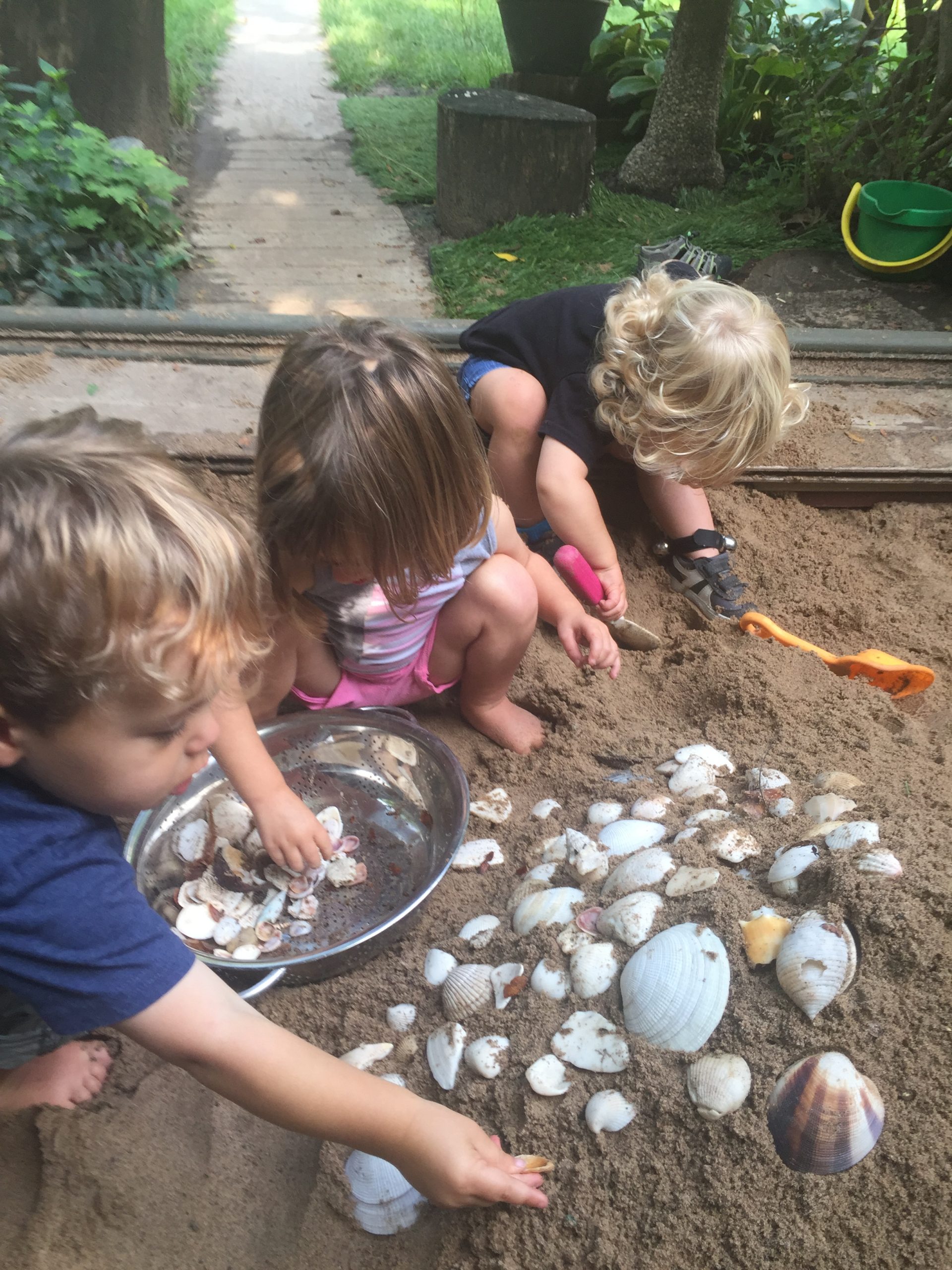Digging For Gold!
"I found GOLD!" squeals Laura.
Four little friends scurry over to join the latest "gold rush" in the sandbox.
In the wee hours of the morning, when the sun is barely peeking over the horizon and the coffee is still being brewed, gold nuggets often "magically appear" in our sandbox.
Or at least that's the story I share with my enthusiastic gold miners! The gold nuggets are actually spray-painted crushed gravel pebble stones sold as vase fillers on Amazon. For about $10, you can buy a two-pound bag.
The prospect of discovering one of these shiny treasures motivates our young gold miners to spend hours digging, collecting, categorizing and, hopefully, sharing!
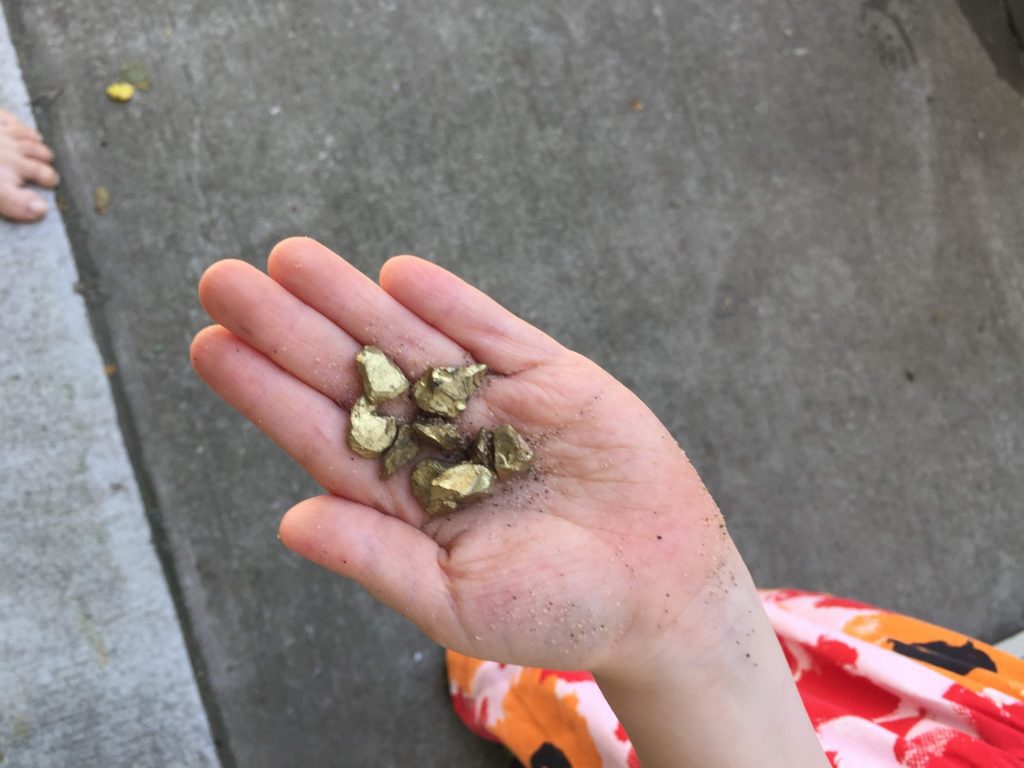
Once upon a time back in 1886, the first sand garden was created in the yard of the Children’s Mission on Permenter Street on the North End of Boston.
In the late 1800s, sand gardens were viewed as safe places for immigrant children to play in during the summer months while their parents worked in nearby factories. These early sand gardens are often referred to as America's "first playgrounds."
Perhaps we should harken back to a simpler time and incorporate sandboxes into our outdoor classrooms for young learners.
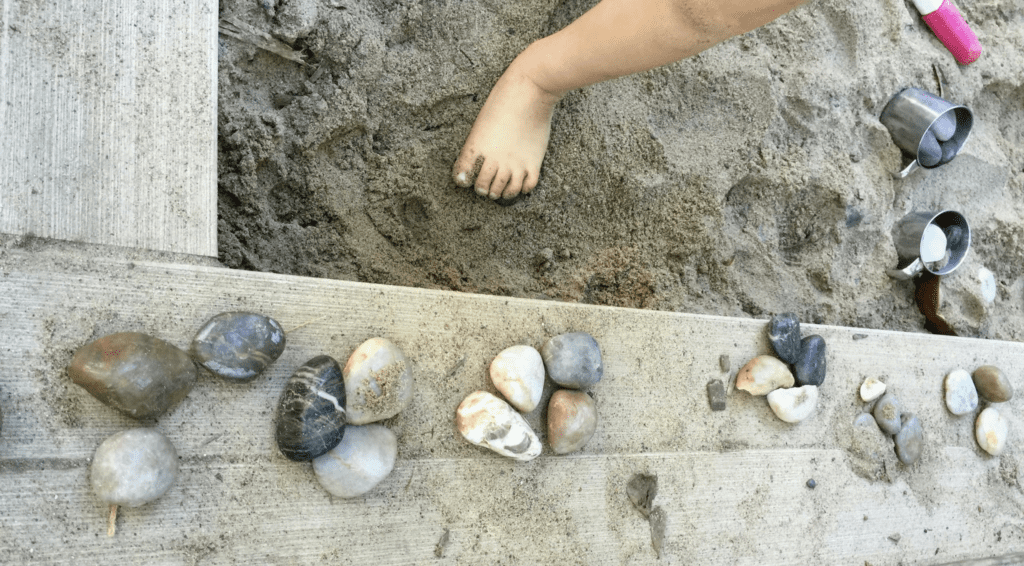
A sandbox is a portal to learning adventures—inviting curiosity and creativity, exploration and investigation.
Sandboxes offer a soothing sensory experience and an opportunity to experience natural textures while experiencing the peace and simple pleasures of sand play.
Peer pressure will entice reluctant "sand explorers" to kick off their shoes and join in the fun. Place a big shoe basket near your sandbox to keep track of all cast-off shoes and socks. You'll thank yourself at the end of each sand session!
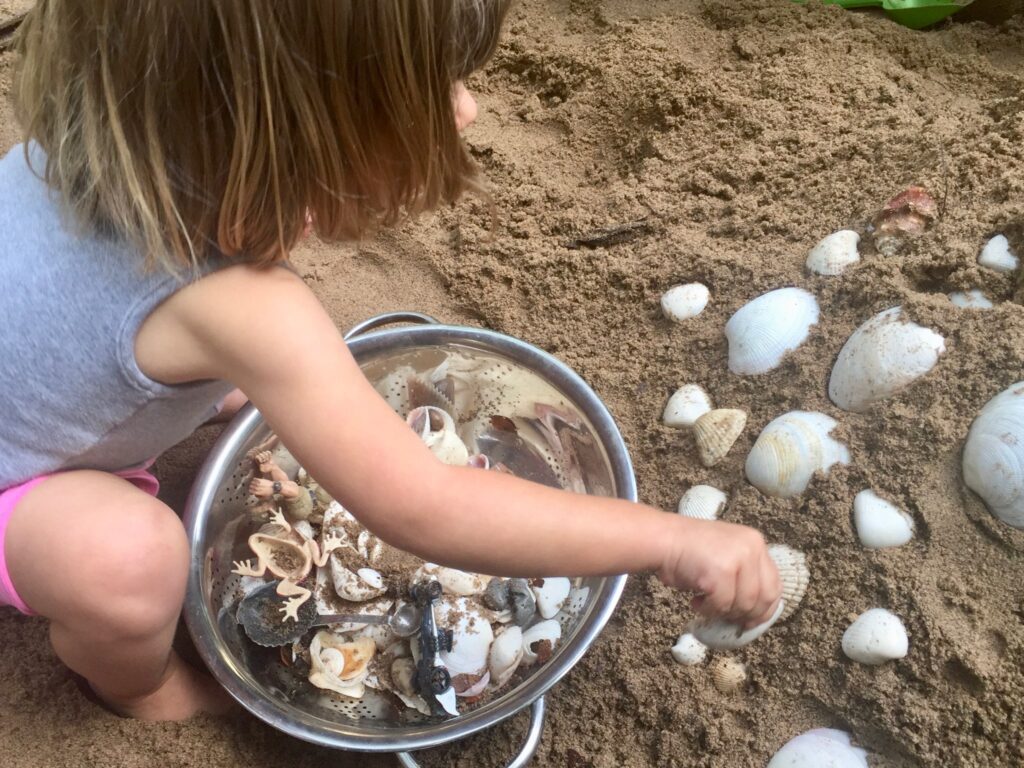
When we add loose parts to our sand, we create opportunities for counting, collecting and designing.
We can explore symmetry and patterns. By adding baking tools, we can explore measurement and estimation.
Opportunities abound for vocabulary growth and lessons about location and position.
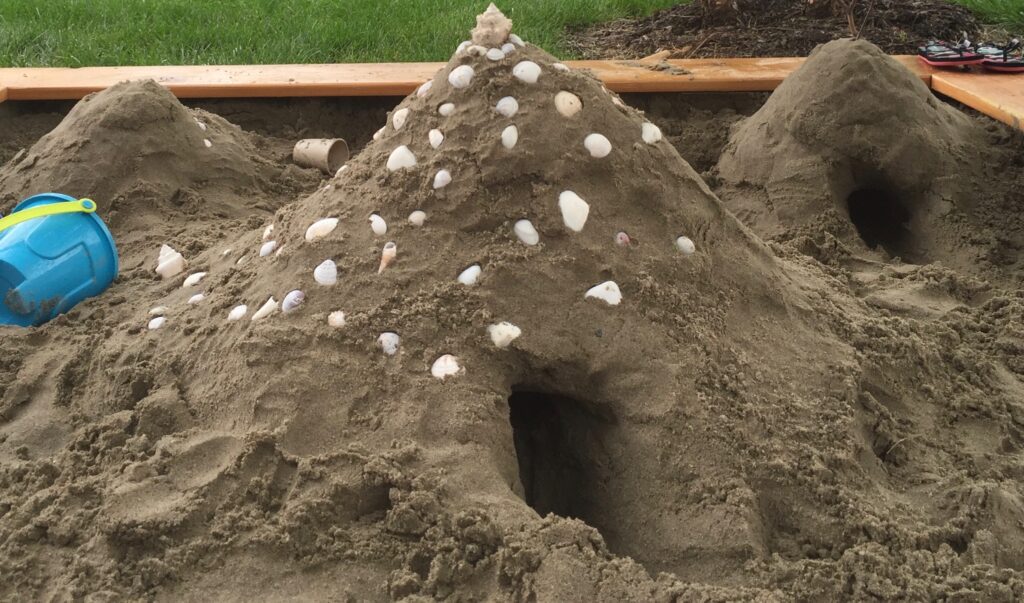
Encourage children to mix sand with water to see how water changes the physical properties of the sand.
This type of sand play inspires children to create models of their own making. What they imagine, they can create. They create plans, make observations and experiment with ideas. This is science!
"Joseph, can you get the trucks to drive under our castle?"
The children have been busy building and decorating large mounds of sand.
Now they are cautiously digging tunnels through their "mountains."
Tunnel digging builds engineering knowledge as children predict, problem-solve and collaborate with friends—all while spending long periods of time engaging in what appears to be play.
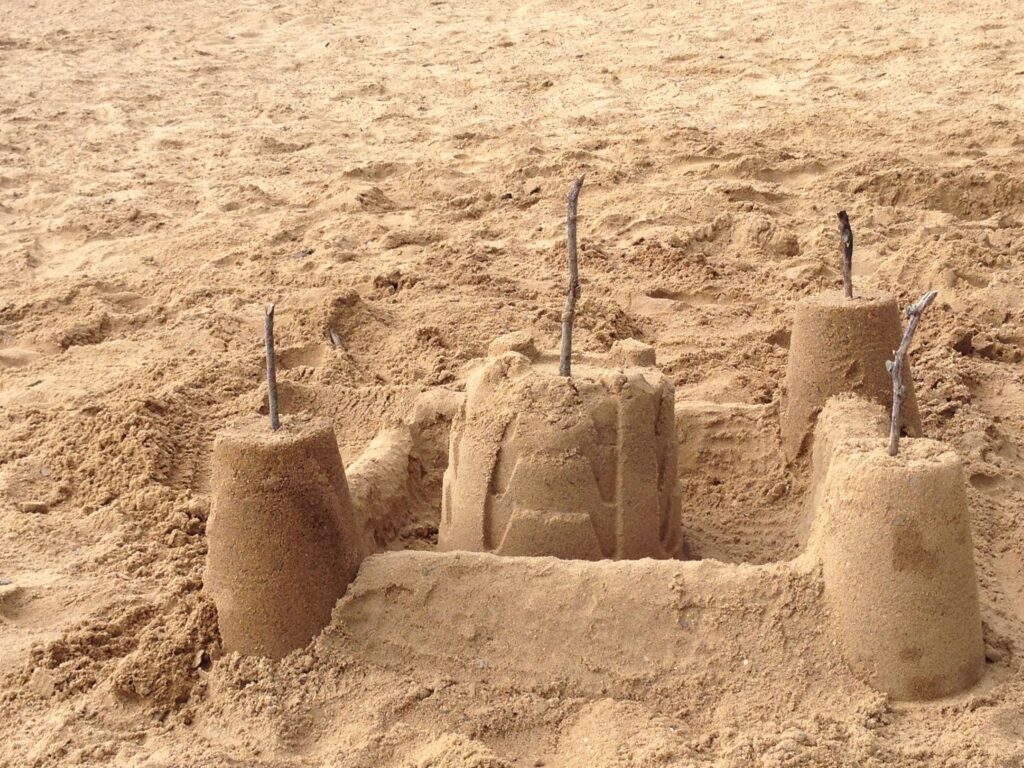
It took me years to figure out that a small amount of preparation can make a sandbox a lot more inviting to early learners.
Prepping your sandbox is as essential as prepping any other area of your classroom! If the sandbox is full of leaves, too many loose parts from yesterday's play or any other undesirable objects, it won't be, well...desirable!
It only takes a few minutes to clear out the sandbox and rake the sand. Your efforts will be richly rewarded as the children flock to the sandbox for hours of hands-on learning.
An inviting sandbox will "invite" the children to explore math and science concepts in a relaxing setting that melts away stress and opens the mind to deep learning.
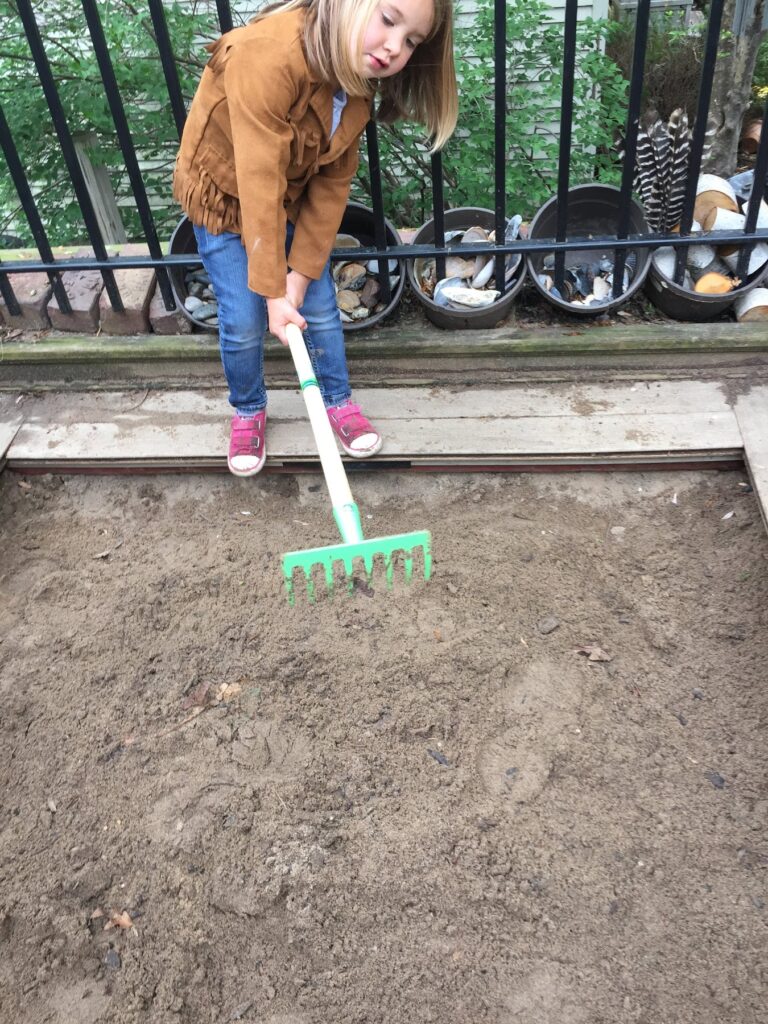
If sand is a new adventure for you, recognize and remove any obstacles early on.
The first rule of sand play? Have a water source nearby to make the sand packable. A garden hose, gallon buckets of water or nearby rain barrels will open up a treasure trove of opportunities that simply are not possible with dry sand.
Shade is another important element to consider. If you don't have a large tree to shade your sandbox, use a beach umbrella or tie some parachute cloth to nearby structures.
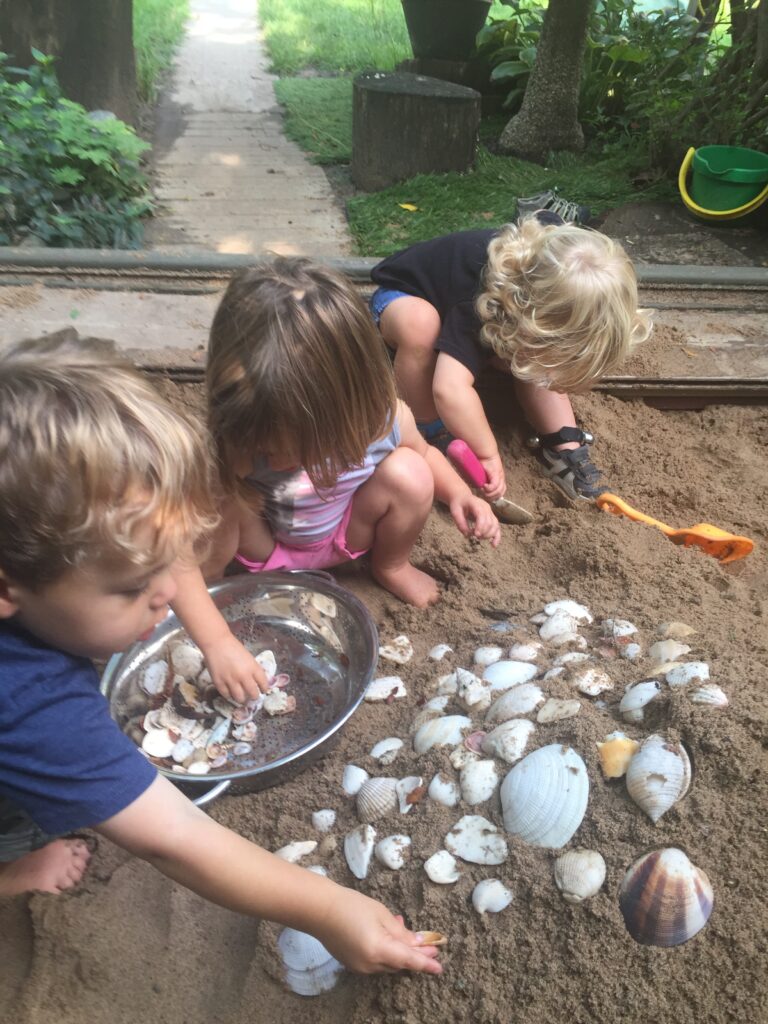
I know educators who are "allergic" to sand in the same way that they are allergic to playdough!
If you're one of these people, it might be time for a paradigm shift. Yes, sand gets into shoes, socks, shorts and even those adorable toddler ringlets.
But sand play also opens doors to discovery. As the English poet William Blake once noted, one can "see a world in a grain of sand."
Let's allow our children to enjoy the serenity, sensory pleasures and myriad possibilities of outdoor sand play. I promise you, it will buy you hours of calm, hands-on learning.
If you build it, they will come. It's pure gold!
